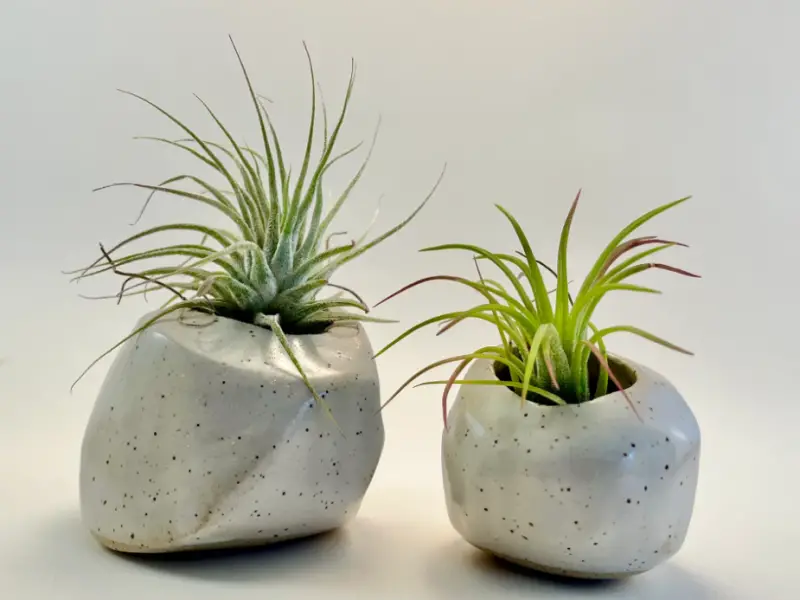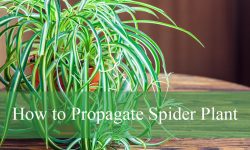Consider cultivating an air plant if you’re searching for a simple yet unusual houseplant. Indoor air plants are well-known for requiring little care, making them perfect for novices. What sets them apart from traditional plants is their ability to grow without soil, making them not only fascinating but also highly adaptable to various indoor spaces. Air plants, commonly from the Tillandsia genus, come in hundreds of varieties that are fun to display in creative ways around your home.
This ultimate guide will cover everything you need to know to care for and grow these tropical wonders successfully.
What Is an Air Plant?

The term “air plant” refers to a specific type of plant that doesn’t require soil to grow. Instead, they grow on the surfaces of other plants, usually trees, without being parasitic. Air plants, also called epiphytes, absorb water and nutrients directly from the air, rain, and nearby organic debris. The term epiphyte originates from the Greek words “epi” meaning “on top of” and “phyte” meaning “plant.”
Basic Information:
- Common Name: Air plant
- Botanical Name: Tillandsia
- Family: Bromeliaceae
- Plant Type: Epiphytes
- Mature Size: 2-12 inches indoors, 5-7 feet outdoors
- Sun Exposure: Partial, indirect light
- Bloom Time: Varies by species
- Flower Colors: Red, pink, blue, purple, yellow, white
- Hardiness Zones: USDA 9-13
- Native Areas: North and South America
How to Care for Air Plants
Though air plants are low-maintenance, they do require some specific care to ensure they thrive indoors. Here’s a breakdown of the key areas to focus on when caring for your Tillandsia.
Light
Air plants naturally grow in the shaded areas of tropical forests, so they prefer bright, indirect light. Avoid exposing them to prolonged direct sunlight, which can burn their delicate leaves. A room with filtered light or a place near a window with sheer curtains is ideal.
Watering
Though air plants don’t grow in soil, they still require regular watering. The most common method is to soak them in a bowl of water for 20-40 minutes every one to two weeks. Some air plants may prefer misting or a quick dunk instead of soaking. Always research the specific type of air plant you own to determine its preferred watering method. Use distilled or rainwater, as tap water may contain chemicals that harm your plants.
Temperature and Humidity
Air plants thrive in warm, humid environments, making them well-suited to rooms like bathrooms or kitchens. Ideal temperatures range from 50°F to 90°F (10°C to 32°C). Ensure they’re not placed in overly dry areas or near air conditioning/heating vents, as dry air can cause dehydration.
Fertilizing
To keep your air plants healthy, you can fertilize them once or twice a month using a water-soluble fertilizer designed for bromeliads or air plants. Add the fertilizer to the water when you soak or mist your plants. This will give them the nutrients they need to grow, flower, and produce new offshoots, or “pups.”
Creative Ways to Display Air Plants
One of the best things about air plants is their versatility in how you can display them. Since they don’t need soil, you’re free to get creative. Here are some ideas:
- Mount them on driftwood, rocks, or even a decorative wood board.
- Place them in areas where you can’t usually grow other plants, such as on walls, mirrors, or headboards.
- Use hanging air plant holders from the ceiling or a curtain rod for a modern touch.
- Place them in terrariums or small planters and position them around the house.
Terrariums are a popular way to display air plants, but keep in mind that some species, like xeric air plants, which come from drier climates, may not thrive in humid enclosed terrariums. Mesic air plants, however, which are used to living in humid environments, are a better fit.
Popular Types of Air Plants
There are hundreds of varieties of air plants spanning multiple plant families. Below are some well-known types of epiphytes you might consider for your home:
- Orchids (Orchidaceae): The most common epiphytic orchids are Phalaenopsis, which use their roots to absorb moisture and nutrients from the air.
- Epiphytic Cacti (Cactaceae): Includes species like the Christmas cactus and fishbone cactus, which are native to tropical rainforests.
- Ferns (Polypodiaceae): Not all ferns are epiphytic, but species like the staghorn fern and bird’s nest fern are popular air plant varieties that can grow without soil.
Pruning and Propagating Air Plants
As air plants grow, they may shed their older, outer leaves naturally. You can assist by gently removing dried or dead leaves. Pruning keeps the plant healthy and encourages new growth. When leaves become damaged, trim them with sterilized garden shears at an angle to maintain the plant’s appearance.
Propagation
Most air plants can be propagated through the division of pups, which are offshoots that grow from the base of a mature plant. When the pups reach about one-third the size of the parent plant, they can be separated and grown as independent plants.
- Hold the base of the mother plant and gently pull the pup away.
- If they don’t separate easily, use a sterilized knife or scissors.
- Once separated, care for the new plant the same way as the parent plant.
Stem Cuttings (for some species)
In some cases, you can propagate air plants using stem cuttings. After taking a cutting, allow it to dry for 24 hours, then place the cut end in water. Over time, new roots will begin to form.
Common Issues and Solutions
While air plants are generally easy to care for, there are some common problems that may arise.
Browning Tips
Brown or crispy leaf tips indicate a lack of moisture. Increase the humidity around the plant or water more frequently. If this doesn’t help, consider increasing the watering schedule.
Mushy Stems
Overwatering can lead to rot, indicated by brown, squishy stems. To save the plant, remove the damaged areas and reduce your watering schedule.
Pests
Mealybugs and scale insects can attack air plants, causing wilting and discoloration. Combat these pests by wiping the leaves with rubbing alcohol and treating the plant with neem oil.
Blooming Air Plants
One of the most exciting moments for any air plant enthusiast is when their plant blooms. However, air plants bloom only once in their lifetime. After blooming, they shift their energy towards producing pups. Air plants’ blooms come in a variety of vibrant colors, including red, pink, blue, and purple, and can last anywhere from a few days to several months, depending on the species.
How to Encourage Blooms
To help your air plant bloom, ensure it gets plenty of indirect light, regular watering, and is fed monthly. Once the flower stalk appears, it’s essential to maintain good care routines to enjoy the vibrant display for as long as possible.
Post-Bloom Care
After blooming, trim the flower stalk at the base to direct the plant’s energy toward growing pups. These pups will eventually grow into mature plants, continuing the lifecycle.
Conclusion
Air plants are an incredible addition to any indoor garden, thanks to their unique growth habits and versatility in display options. With minimal maintenance and the ability to thrive without soil, they are perfect for both beginners and seasoned plant enthusiasts. By providing the right light, water, and humidity, your air plant will thrive and reward you with beautiful blooms and offshoots.







I always wondered if air plants were artificial plants, when spotting them in others’ homes. Thanks for clearing up the mystery for me!
Awesome blog by the way. Educational and helpful. Got any social media for it, to follow you there?